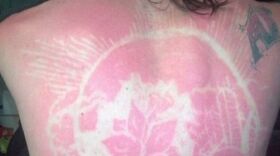In this segment of Vital Signs, some new hope for patients with vitiligo. It's an auto-immune disease that causes you to lose color in your skin. Vitiligo isn't life-threatening for the two million people in the U-S who have it, but it can be very stressful.
Dr. Amit Pandya, a professor of Dermatology at UT Southwestern Medical Center, talked about vitiligo and a treatment he’s refined to restore the discoloration.
Highlights from Dr. Pandya’s Interview:
How effective are traditional treatments for vitiligo like ultraviolet light? “Ultraviolet light usually will repigment the skin slowly. Problem is that it doesn’t come back on the hands, the feet, the elbows and knees, which are very visible. But the face and neck tend to do very well with ultraviolent light and some creams that we’re able to offer.”
The treatment you’ve refined involves skin grafts? “The original type of skin grafting is where you used to cut the skin and take normally pigmented pieces from the thigh, for example, and then you would graft it on to areas of vitiligo. That would require creating a scar, and then sanding down the skin where you have the vitiligo, and then transferring the skin there.”
“What we do is create blisters on the thighs, and those blisters tops heal just like you have a grease burn on your hand. They heal just fine. And then those blisters we incubate in an enzyme and we separate the cells. And we have thousands and thousands of them. Then we take a laser and remove just the superficial layer of white skin, and we apply the cells to the area of white skin. And they grow like seeds in a lawn.”
How effective is this treatment? “Quite effective for people with stable vitiligo. If they've already had phototherapy, and now they have just a few areas left that just will not repigment, it’s quite effective. We get over 50-percent of the color and sometimes 90-percent of the color back using this seed technique.”
“This treatment would work on the remaining areas of the body that don’t respond to ultraviolet light. There’s also a type of vitiligo which occurs in 20-percent in patients that’s called segmental vitiligo. It’ll be like a birthmark or just one side of the face, and it works especially with those patients.”
“We want to get people in within two years of onset, especially young people. When they wait 10, 15 years and they have huge areas, it’s too late for me to repigment them.”
For more information:







